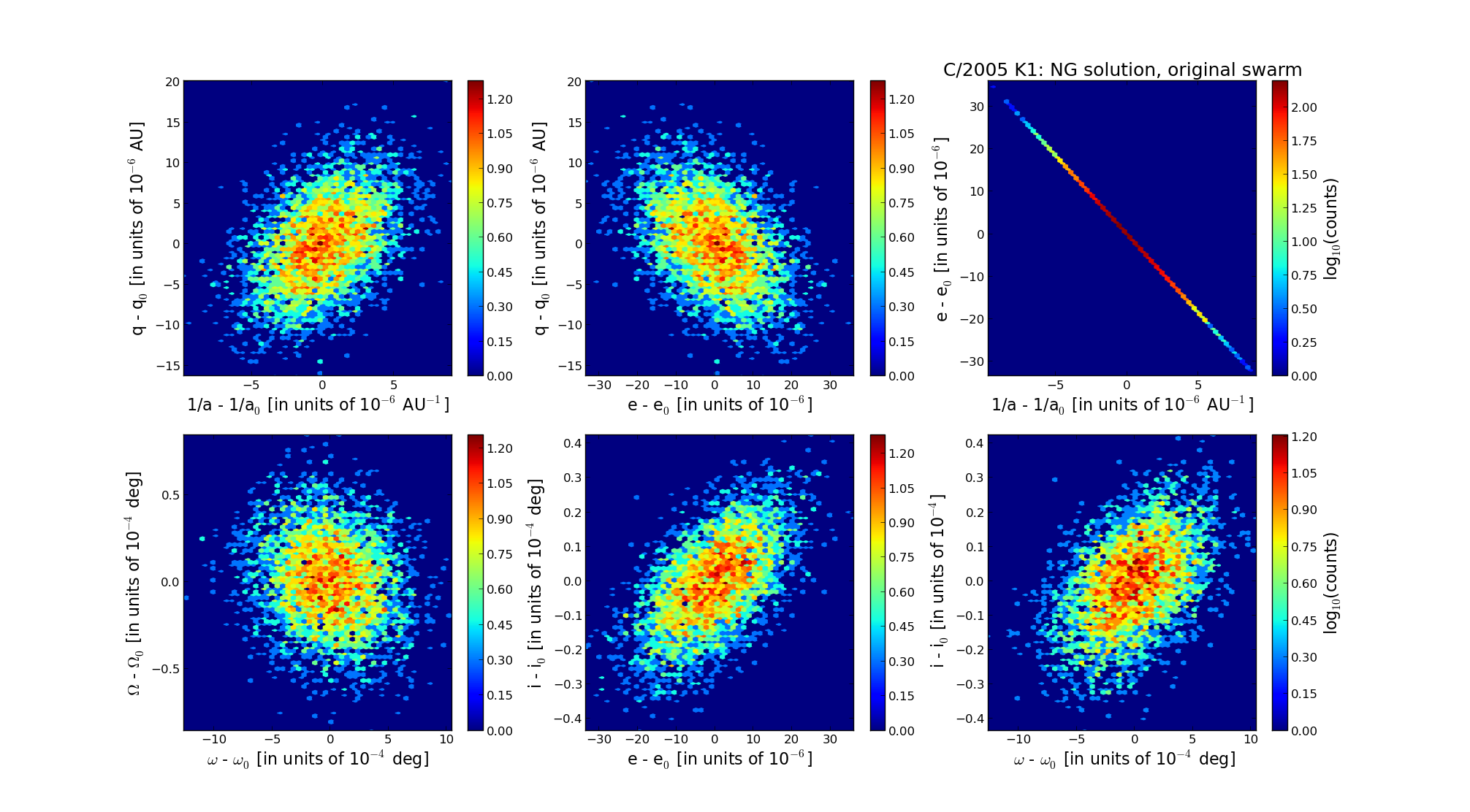| Solar System Dynamics & Planetology Group |
 |
C/2005 K1 Skiff |  |
| Solar System Dynamics & Planetology Group |
 |
C/2005 K1 Skiff |  |
| number of observations | 642 |
| number of residuals | 1246 |
| data interval | 2005 May 16 — 2007 Aug. 6 |
| rms [arcsec] | 0.52 |
| orbit quality class | 1a |
| Epoch (TT) | 20051106.0 | = JD 2453680.5 |
| time of perihelion passage (TT) | 20051121.217840 | ± 0.000908 |
| perihelion distance | 3.69287282 | ± 0.00000357 |
| eccentricity | 1.00327669 | ± 0.00000422 |
| argument of perihelion [deg] | 134.943605 | ± 0.000193 |
| longitude of the ascending node [deg] | 106.304986 | ± 0.000023 |
| inclination [deg] | 77.747678 | ± 0.000012 |
| inverse semimajor axis [10-6 au-1] | -887.30 | ± 1.14 |
| Nongravitational parameters [10-8 au/day2] | A1 = 2515 ± 741 | A2 = 184 ± 762 | A3 = 0 (assumed) |

| Epoch (TT) | 17021205 | |
| time of perihelion passage (TT) | 20051121.776254 | ± 0.001340 |
| perihelion distance | 3.69197608 | ± 0.00000503 |
| eccentricity | 0.99996944 | ± 0.00000974 |
| argument of perihelion [deg] | 135.026925 | ± 0.000316 |
| longitude of the ascending node [deg] | 106.341220 | ± 0.000024 |
| inclination [deg] | 77.810523 | ± 0.000012 |
| inverse semimajor axis [10-6 au-1] | 8.28 | ± 2.64 |
| Epoch (TT) | 23071015 | |
| time of perihelion passage (TT) | 20051121.746277 | ± 0.001318 |
| perihelion distance | 3.68630111 | ± 0.00000635 |
| eccentricity | 1.00029483 | ± 0.00001140 |
| argument of perihelion [deg] | 134.829785 | ± 0.000238 |
| longitude of the ascending node [deg] | 106.358493 | ± 0.000024 |
| inclination [deg] | 77.794144 | ± 0.000012 |
| inverse semimajor axis [10-6 au-1] | -79.98 | ± 3.09 |